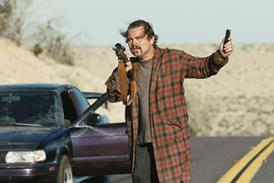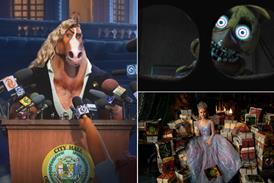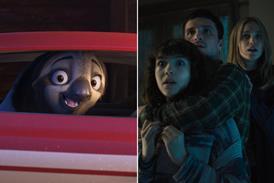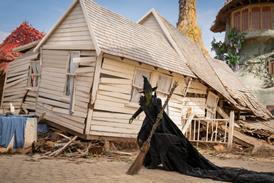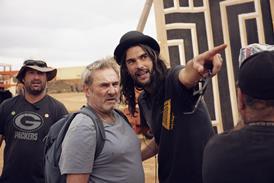Strong debut effectively updates Little Red Riding Hood to the modern day forests of Oregon
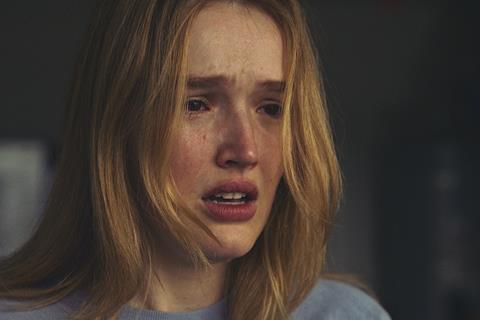
Dir/scr: Kelsey Taylor. US. 2023. 92mins
For her feature debut, writer-director Kelsey Taylor updates Little Red Riding Hood for the modern era, stripping away the fairytale elements but retaining its grim warning about the predators in our midst. To Kill A Wolf has a mournful quality to its portrayal of a troubled 17-year-old girl who is found in the middle of the forest by a loner, each of them harbouring painful secrets that risk overwhelming them. Marked by strong, reserved performances — and deeply compassionate to its soulsick characters — this quietly absorbing drama has secrets in store, each of them revealed with uncommon elegance.
Creates a mood of lush foreboding
Premiering at Edinburgh, To Kill A Wolf lacks big stars, although its fairytale hook may be enough to lure arthouse audiences. It would be uncharitable to reveal the picture’s twists, but suffice it to say that Taylor – who garnered attention thanks to her 2019 short Alien: Specimen, based on the long-running sci-fi franchise – touches on hot-button topics while also addressing grief, guilt and reconciliation. It is a credit to the first-time filmmaker that she approaches these themes with understatement, never inflating her modest story with emotional theatrics.
As the picture begins, we meet a stoic Oregan man (Ivan Martin) who lives by himself in the woods. (He is identified in the end credits as The Woodsman — the audience doesn’t learn his actual name until the final scene.) He makes a shocking discovery while taking a walk: teenager Dani (Maddison Brown), who is unconscious and suffering from hypothermia. Preferring his quiet life of seclusion, he nonetheless brings her back to his home and nurses her back to health. Dani is cagey when explaining why she was in the forest, only saying that she needs to get to her grandmother’s place. The Woodsman agrees to drive her, not realising that Dani is avoiding telling him the whole truth — or that she is trying to avoid her aunt (Kaitlin Doubleday) and uncle (Michael Esper), who are her caretakers.
Taylor creates a mood of lush foreboding, with Adam Lee’s atmospheric cinematography capturing the dank unease of the Oregon woods. To Kill A Wolf is not a horror film, or even a thriller, but the writer-director gives the proceedings an otherworldliness that creates an air of mystery. Indeed, everyone is hiding parts of themselves from view.
Because of the film’s chapter titles (’The Woodsman’, ’Grandma’, ’The Wolf’, ‘Red’) we start to seek out the parallels between this tale and Little Red Riding Hood and, for the most part, Taylor skilfully transplants the story to the present day. It helps that To Kill A Wolf is not always a faithful adaptation, with the narrative eventually pausing for a lengthy flashback that shows how Dani ended up in the forest. But the jumbled chronology and fairytale parallels are never done for the sake of mere cleverness — rather, they draw viewers closer to The Woodsman and Dani, helping us understand the trauma each of them has experienced. To Kill A Wolf deviates from the original story in terms of plotting, but its themes of the corruption of innocence and the possibility that danger lurks around every corner — including places we assumed were safe — remain potent.
Martin is a portrait of gloomy resignation as The Woodsman, who derives pleasure however he can — whether it’s thwarting a local rancher by sabotaging his brutal animal traps or futzing with his prize possession, a hi-fi stereo. As might be expected, he has chosen to live away from the world because of a shameful memory, but To Kill A Wolf eventually reveals that information with a welcome lack of fanfare or theatrics. Martin carries his character’s emotional scars with a refreshing straightforwardness, which makes The Woodsman’s decision to help Dani all the more touching. After years of retreating from society, maybe he is finally ready to let someone in.
The flashbacks answer the riddles concerning Dani’s past, and Brown is affecting as a 17-year-old who has already endured her share of tragedy. More is coming her way, though, due to her tense relationship with her aunt and uncle, and Esper in particular shines as a would-be role model who is wrestling with his own demons.
To Kill A Wolf brushes up against some tough subject matter, but Taylor and her cast refuse to sensationalise such issues or devolve into melodrama. The film wisely remembers that these characters tend not to verbalise their problems, preferring to let their pain simmer silently inside them. When, at last, there are a few impassioned outpourings at the finale, they don’t just feel earned but cathartic.
Production companies: Detention Films, All The Better
International sales: Kelsey Taylor, ktaylo23@gmail.com
Producers: Adam Lee, Kelsey Taylor, Ricky Fosheim, Zach Golden
Cinematography: Adam Lee
Production design: Juliana Collins
Editing: Dawson Taylor
Music: Sara Barone & Forest Christenson
Main cast: Ivan Martin, Maddison Brown, Michael Esper, Kaitlin Doubleday, David Knell




